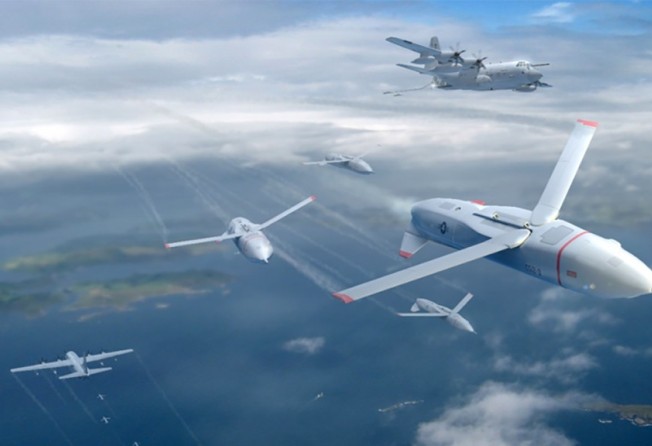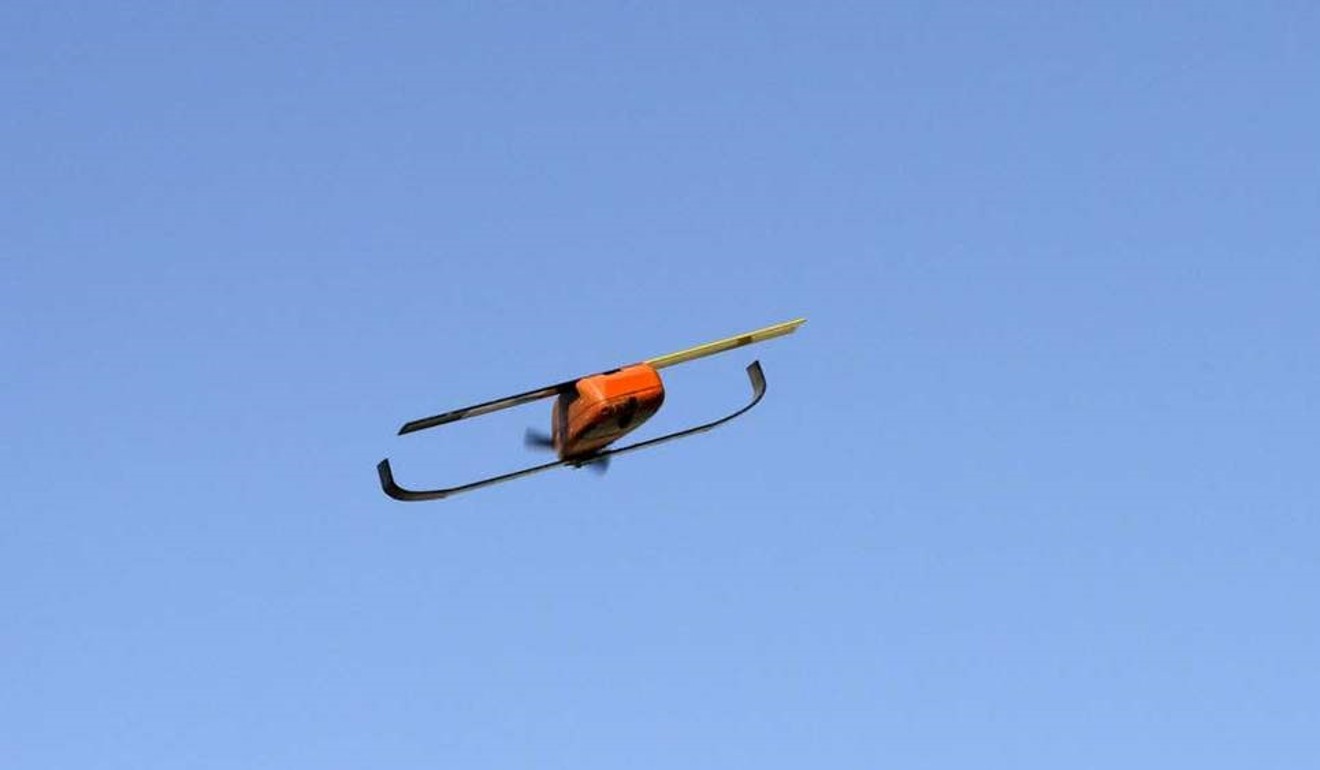Release the Gremlins: Pentagon plans flying aircraft carriers for drone swarms
‘You can send volleys of swarms over and over again and really just overwhelm an adversary with that complexity’

Flying aircraft carriers that launch and recover fleets of small, inexpensive drones could soon be part of the US military arsenal, as the Pentagon works with private technology partners to engineer that vision into reality.
In late April the Pentagon’s advanced research-and-development arm, known as DARPA, awarded a 21-month, US$38.6 million contract to Dynetics, a Huntsville, Alabama-based company, to work on the software and technology. San Diego-based Kratos, a venture-funded tech company that specialises in cheap drones used for target practice, joined as a subcontractor and will build a new class of drones whose wings can be folded up for easier storage in the belly of a plane.
For the US military, gaining the ability to have multiple drones quickly and reliably take off from a plane and return to it would be a big step forward, aviation experts say. The goal is to build the technology and know-how needed to apply hordes of small drones on the battlefield.
“You can send volleys of swarms over and over again and really just overwhelm an adversary with that complexity,” said Tim Keeter, a deputy programme manager and chief engineer at Dynetics. The lower cost could also allow the company’s military customers to take greater risks and be more aggressive on the battlefield, Keeter said.
Watch: Pentagon releases swarm of micro drones
Commercial tech companies have already shown that they can coordinate flocks of drones to carry out tremendously complex aerial acrobatics; an aerial display organised by Silicon Valley chip manufacturer Intel was a highlight of the 2018 Winter Olympics in Seoul.
The DARPA programme, code-named “Gremlins,” calls for the two companies to demonstrate the safe and reliable aerial launch and recovery of multiple unmanned aircraft. Having completed the technical designs for the small drones and the complex sensor systems that will enable them to fly in tandem, the companies are now working on the software that will allow for safe take-off and landing.
Next, they will have to show that they can launch a pack of four drones from the body of a C-130 cargo plane, sending them out to fly on their own for 30 minutes and then fly back into the plane.
Dynetics has already demonstrated the recovery system on the C-130, company officials said Friday, using a mock-up drone that successfully separated from the wing of a plane (the mock-up later crashed to the ground). The company demonstrated the aerial recovery system by lowering a similar mock-up drone down from the plane and then pulling it back into the belly of the aircraft.

The US military has explored the concept of airborne aircraft carriers before. In the 1930s, the Navy successfully launched a pair of biplanes from a helium-filled airship (the idea was abandoned after a series of catastrophic airship crashes).
Now, almost a century later, officials think that smaller, more reliable drones offer a new opportunity.
David Deptula, a retired Air Force general who serves as the dean of the Mitchell Institute of Aerospace Power Studies, said that proving safe and reliable aerial recovery would mean new opportunities for the military.
“We haven’t done this before,” Deptula said. “This is greatly expanding the envelope in increasing a mission area that is in extraordinary demand.”
For now, there’s relatively little funding behind the effort; the entire programme will cost US$64 million over 43 months, about two-thirds the cost of a single F-35 Joint Strike Fighter. But government officials say these sorts of efforts are a critical component of the Pentagon’s plan to outmatch potential “nation-state” enemies, most notably Russia and China.
The Gremlins programme started under the Obama administration as part of a pool of investments referred to as the “Third Offset.” The programme includes using advancements in robotics, unmanned vehicles and artificial intelligence to ensure that the United States would remain dominant in a war against another government.
The Gremlins programme is part of a broader school of thought among military theorists, which holds that the pilots of the future will fly into enemy airspace flanked by unmanned or robotic companions.
DIUx, the Pentagon’s Silicon Valley technology investment arm, has invested in robotic, jet-powered drones designed to fly alongside fighter planes to absorb enemy fire in lieu of expensive, manned fighter jets. The Navy is working on autonomous submarines that can clear mines, scout dangerous areas or carry a payload.
Now, with defence spending poised to increase over the next two years, such investments stand to benefit from more financial firepower.
“I definitely think collaborative systems are the future,” Assistant Secretary of the Air Force Will Roper said during a recent panel discussion.